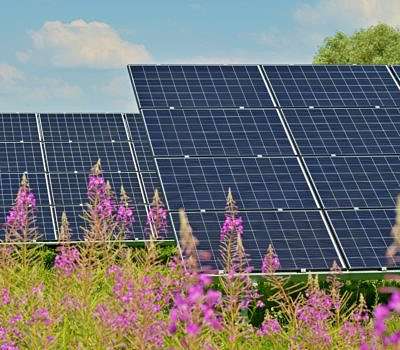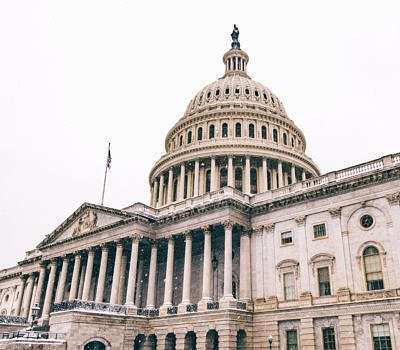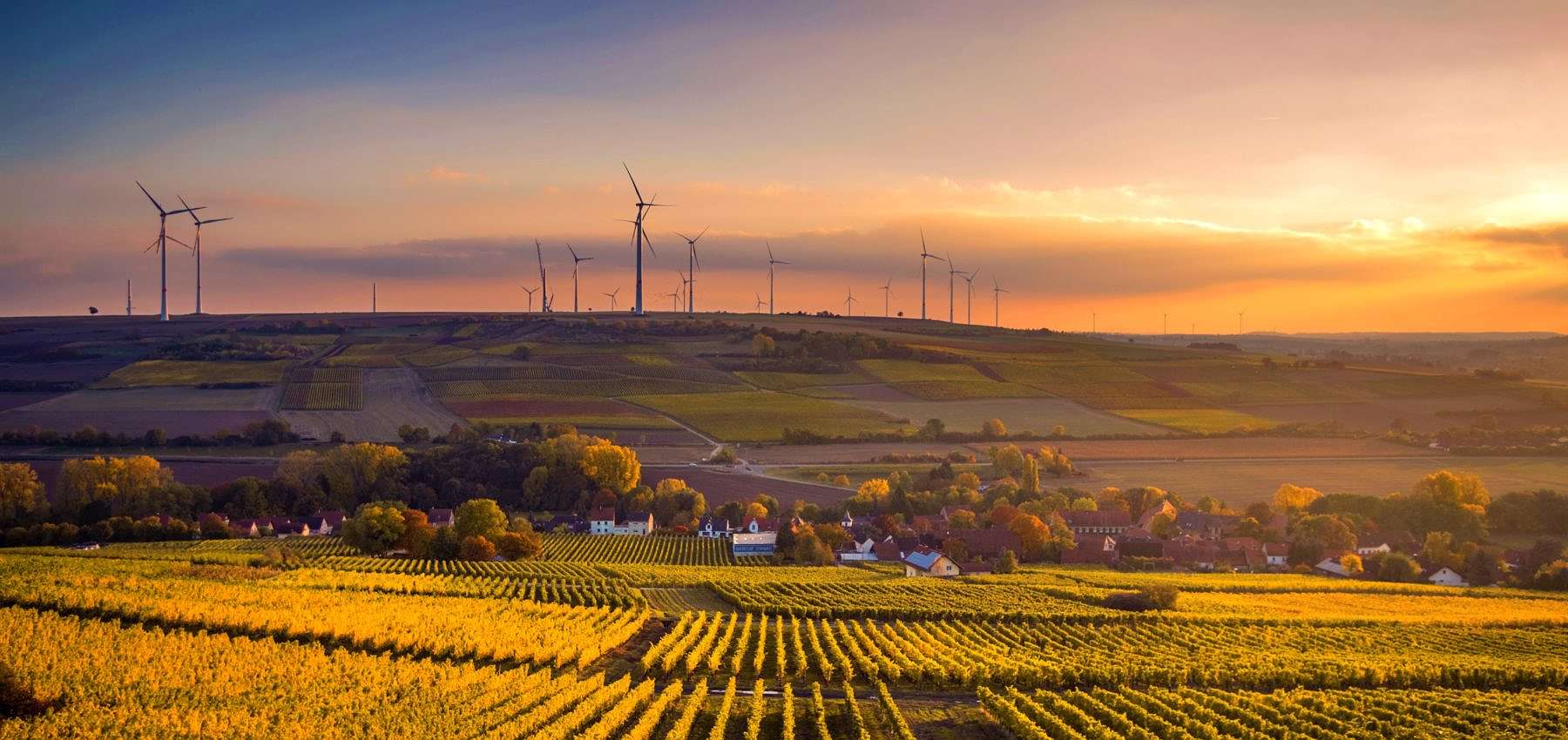What should I know about beneficial electrification?
Beneficial electrification is the practice of replacing end-use consumption of fossil fuels with electricity that:
- reduces energy costs;
- reduces environmental impacts; or
- helps strengthen grid reliability and stability.
Electrification that fulfills at least one of these requirements without adversely affecting the others, is considered beneficial. Nevertheless, satisfying all these three conditions would support climate change mitigation efforts.

Yes! Your carbon footprint can be reduced by decreasing your use of fossil fuels and by increasing the efficiency of your energy usage. Beneficial electrification is an effective way to achieve both, and your impact will be magnified if the electricity comes from a renewable or carbon-free source!

Beneficial electrification supports the transition to a renewable and clean energy-based electric system. Electrification of fossil-fuel end-uses reduces greenhouse gas (GHG) emissions overall, but the benefits of electrification are maximized when fossil fuel is replaced with renewable or carbon-free electricity. Electrification of fossil fuel end uses with renewable energy can eliminate GHG emissions.
Electrification also supports the development of new renewable energy generation resources, which creates more positive environmental and public health impacts.
Everyone can benefit from beneficial electrification. Although it has significant effects when applied large-scale, beneficial electrification can be seen at all levels, from single consumers to large agricultural activities.
Today, common applications of beneficial electrification go from simple smart lighting systems powered by solar to more complex technologies like smart thermostats and space heaters. These small-scale changes provide an intelligent electrified management system for home energy consumption.
Efficiency supports Beneficial Electrification by reducing the amount of electricity needed. Less electricity means lower costs and helps to better manage the electric grid. Switching to all-electric appliances is a great start because this change will reduce your emissions. Switching to efficient electric appliances is even better because efficiency guarantees a better appliance performance using the same amount of energy.
No. You do not need to build a solar array or a wind turbine to access beneficial electrification. Beneficial electrification is connected to the source of the electricity, whether it be on your farm or elsewhere. While onsite renewable energy generation is certainly one way to access beneficial electrification, and may be very convenient to some, what matters is transitioning off fossil fuels either directly or indirectly through procuring renewable energy.
Agriculture operations have multiple opportunities to electrify end-uses. A variety of tools and machinery can be electrified within the agricultural sector. Electric irrigation pumps are an example. The pumps can use off-grid solar or wind, or feed from the grid and be scheduled to operate during off-peak periods to take advantage of time-of-use rate programs and demand response programs.
Space and water heating systems are another great electrification opportunity since they are typically powered by propane and natural gas; however, replacement technologies like heat pumps and electric thermal storage systems are already commercially available.
Energy consumption in greenhouses can be reduced with a combination of smart heating and cooling systems and agricultural smart lighting systems, and they can also use renewable off-grid electricity. Electric grain dryers, maple sap evaporators, tractors, and forklifts are other examples of electrified machinery used in agricultural activities.

If you are interested in accessing Beneficial Electrification in your farm or agricultural activity, the first step would be to reach out to your utility and find out about Beneficial Electrification programs specially targeting agricultural customers. Due to the variety of approaches and classifications given by utilities to agricultural customers, utilities may have different qualifying requirements.
When planning to electrify end-uses in a beneficial way, it is important to ensure equipment efficiency. Electrifying end-uses without confirming they are efficient can raise energy consumption and energy bills. To ensure end-use efficiency, farmers may contact their utility to conduct audits on appliances, machineries, or technology they intend to employ.
Yes! The U.S. Department of Agriculture has several programs that facilitate farmers access to Beneficial Electrification and include financial aid. See two examples of these programs below.
USDA-Energy for America Program (REAP), Renewable Energy & Energy Efficiency initiative
- This program provides guaranteed loan financing and grant funding to agricultural producers and rural small businesses for renewable energy systems or to make energy effciency improvements. Agricultural producers may also apply for new energy effcient equipment and new system loans for agricultural production and processing.
- Funds may be used for renewable energy systems, such as geothermal for electric generation or direct use; small and large Wind and Solar; Biomass, Hydropower below 30 megawatts; Hydrogen; and Ocean generation.
- Funds may also be used for switching from a diesel to electric irrigation motor; replacement of energy-inefficient equipment; the purchase, installation and construction of energy efficiency improvements, such as HVAC systems; insulation; lighting; cooling or refrigeration units; doors and windows; and electric, solar or gravity pumps for sprinkler pivots.
- Agricultural producers may also use guaranteed loan funds to install energy efficient equipment and systems for agricultural production or processing.
Please visit Rural Energy for America Program Renewable Energy Systems & Energy Efficiency Improvement Guaranteed Loans & Grants | Rural Development (usda.gov) for more information.
USDA-Environmental Quality Incentives Program (EQIP), On-Farm Energy Iniciative.
- Through this program financial assistance is available to inventory and analyze farm systems that use energy and identify opportunities to improve efficiency through the development of an Agricultural Energy Management Plan (AgEMP).
- Once an AgEMP or other qualifying energy audit has been completed, eligible producers can apply for EQIP assistance for the purchase, installation, or retrofit of certain buildings or equipment to improve energy efficiency, such as lighting; plate coolers; ventilation and fans; irrigation pumps; grain dryers; greenhouse improvements; maple syrup evaporators; heating and refrigeration units; insulation and building envelope sealing; and motor controls and variable speed drive
Please visit On-Farm Energy Initiative | Natural Resources Conservation Service (usda.gov) for more information.
For more information about USDS Agriculture Energy Programs please visit Energy Programs | Rural Development (usda.gov)

The recently passed Inflation Reduction Act (IRA) significantly expands the Rural Energy for America Program, which supports rural small businesses and agricultural producers with clean energy and energy efficiency upgrades. IRA also provides funding to the U.S. Department of Agriculture Rural Development to help eligible entities to purchase renewable energy and zero-emission systems and to make energy-efficiency improvements.
Sections 22001 to 22004 describe several benefits which include:
- Up to $1 billion is available for Rural Utilities Service (RUS) loans targeting renewable energy infrastructure, of which 50% are required to be forgiven by the USDA Rural Development. Eligible entities include electric service providers, including municipals, cooperatives, investor-owned and Tribal utilities.
- Over $2.000 billion available for the Rural Business and Cooperative Service (RBCS) through the Rural Energy for America Program (REAP), with $303 million set aside for underutilized technologies and technical assistance. Funds are anticipated to support renewable energy and energy-efficiency projects for more than 41,500 farms and small businesses.
- Up to $500 million in RBCS grants for infrastructure improvements to blend, store or distribute biofuels. This includes installing, retrofitting or upgrading dispensers for ethanol at retail stations as well as home heating oil distribution centers.
- Up to $9.7 billion for RUS to offer loans, grants, loan modifications and other financial assistance to support the purchase of renewable energy systems, zero-emission systems, and carbon capture systems. This funding also may be used to deploy these systems or to make energy-efficiency improvements to generation and transmission systems of eligible entities.

There are a variety of sources of support for beneficial electrification available for agricultural customers. Electric utilities may have programs that promote access to beneficial electrification practices.
Some of them can be:
- Rebate programs which provide money back to customers who have made qualifying beneficial electrification purchases, such as solar panels, heat pumps, electric tractors, etc. They may also have financing programs for these purposes. Some utilities offer free or low-cost installation of electric equipment, which cuts the costs of switching.
- Utilities may also have programs promoting electric irrigation pumps, which can be combined with other programs such as time-of-use pricing and demand response programs.
- Utilities often have time-of-use pricing programs, which adjusts your electricity rates based on periods of high-energy usage. This program makes your electricity rate more expensive during peak-hours and cheaper during off-peak-hours.
- Utilities often have demand response programs giving customers incentive -usually money discounts or credits on their energy bills- for curtailing or stopping their energy usage upon the utility’s request. Demand response programs are designed to curtail electricity usage in a non-perceptible way for the consumer, and the latest versions of them might involve smart technology, which makes it even less noticeable.
Both, time-of-use rates and demand response programs incentivize energy consumption in a way that helps to better manage the grid, but are also designed to save consumers money.
Reach out to your power company to find out where your electricity comes from. Your utility might have the opportunity to offer you clean electricity themselves or through a partner. Some utilities give the consumer the possibility of choosing a different energy supplier, being this a renewable energy generator. This could happen through the utility service in most of the cases, resulting in a single bill, or could also happen as a completely different energy service, resulting in two different energy bills, one to the energy supplier and another one to the utility for the transmission services.
